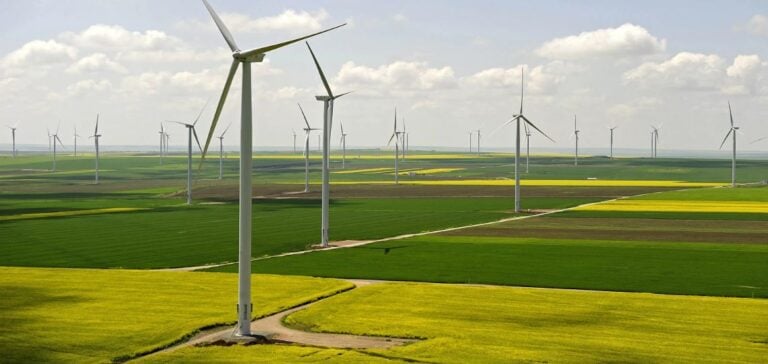Nova Scotia has taken a decisive step in its energy transition with a $224.2 million investment from the Canada Infrastructure Bank (CIB) in the Goose Harbour Lake wind farm. This major project, led by Port Hawkesbury Paper Wind Ltd, includes a 10% equity stake for Mi’kmaq First Nations, marking significant progress for Indigenous economic empowerment.
Economic and Environmental Impact
The wind farm, equipped with 24 Nordex N163-7.0MW turbines designed for cold climates, will deliver a capacity of 168 megawatts of clean, renewable electricity. This project is expected to reduce CO2 emissions by over 350,000 tonnes annually, representing approximately 2.4% of the province’s total emissions in 2021.
Economically, the project will benefit the region by creating 150 jobs during the construction phase and five permanent positions during operations. Port Hawkesbury Paper, the largest industrial electricity consumer in Nova Scotia, will be one of the direct beneficiaries, further strengthening its competitiveness.
A Strategic Partnership for Energy Transition
Indigenous participation is facilitated by Wskijinu’k Mtmo’taqnuow Agency Ltd (WMA), representing 13 Mi’kmaq communities. This collaborative model aims to ensure lasting economic benefits while actively involving First Nations in strategic initiatives.
The funding is part of the CIB’s clean energy program, which allocates $10 billion to support renewable energy, energy storage, and modern distribution systems. Stonebridge Financial Corporation structured the overall financing, ensuring the project’s economic viability.
A Sustainable Vision for Nova Scotia
The provincial government views the Goose Harbour Lake wind farm as a cornerstone of its strategy to achieve carbon neutrality. By supporting large-scale initiatives, the province reduces its reliance on coal, thereby enhancing energy security while driving a green economy.
Construction is set to begin soon, with commercial operations expected by 2026.






















